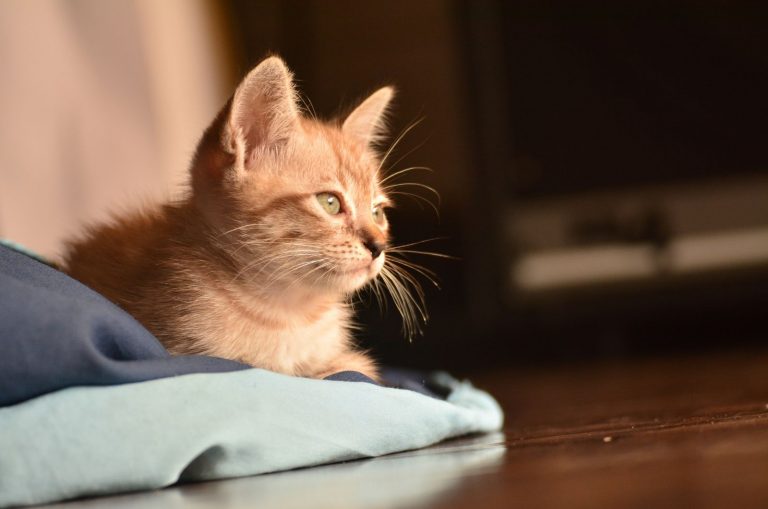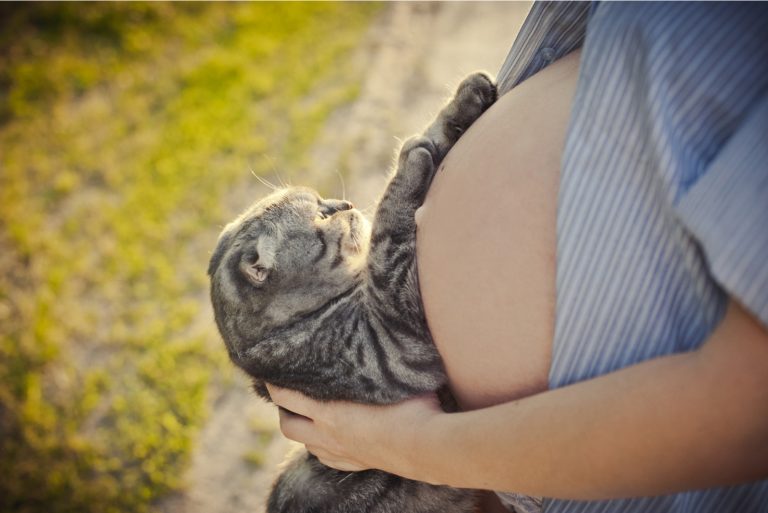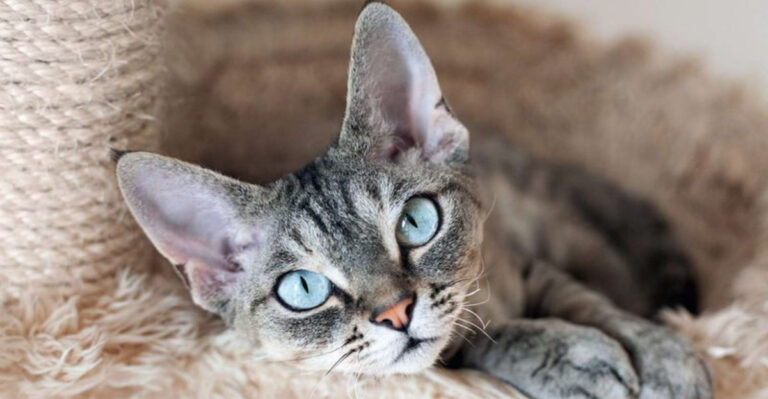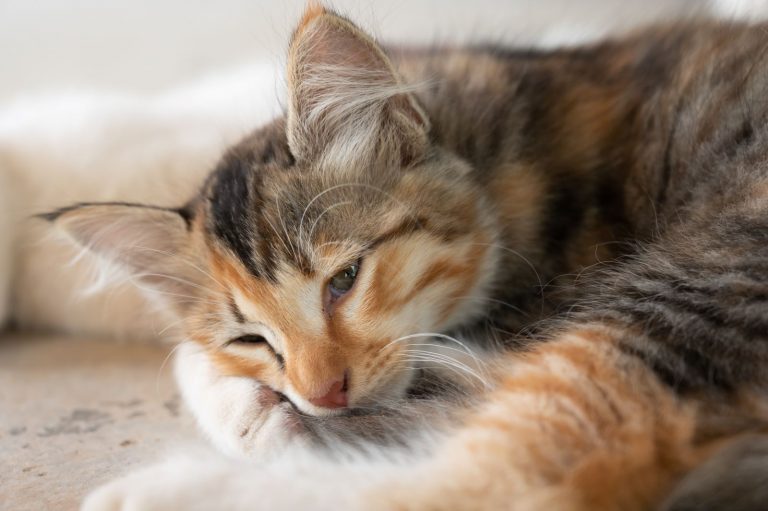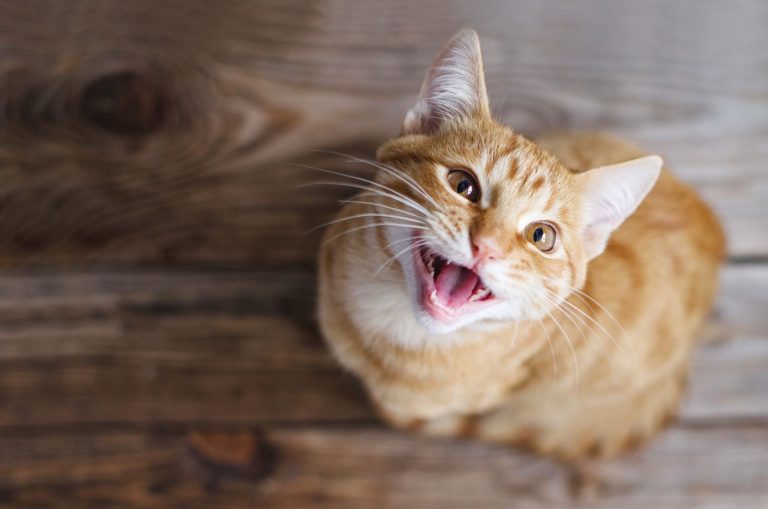Why Do Cats Chase Their Tails? What Does It Mean?
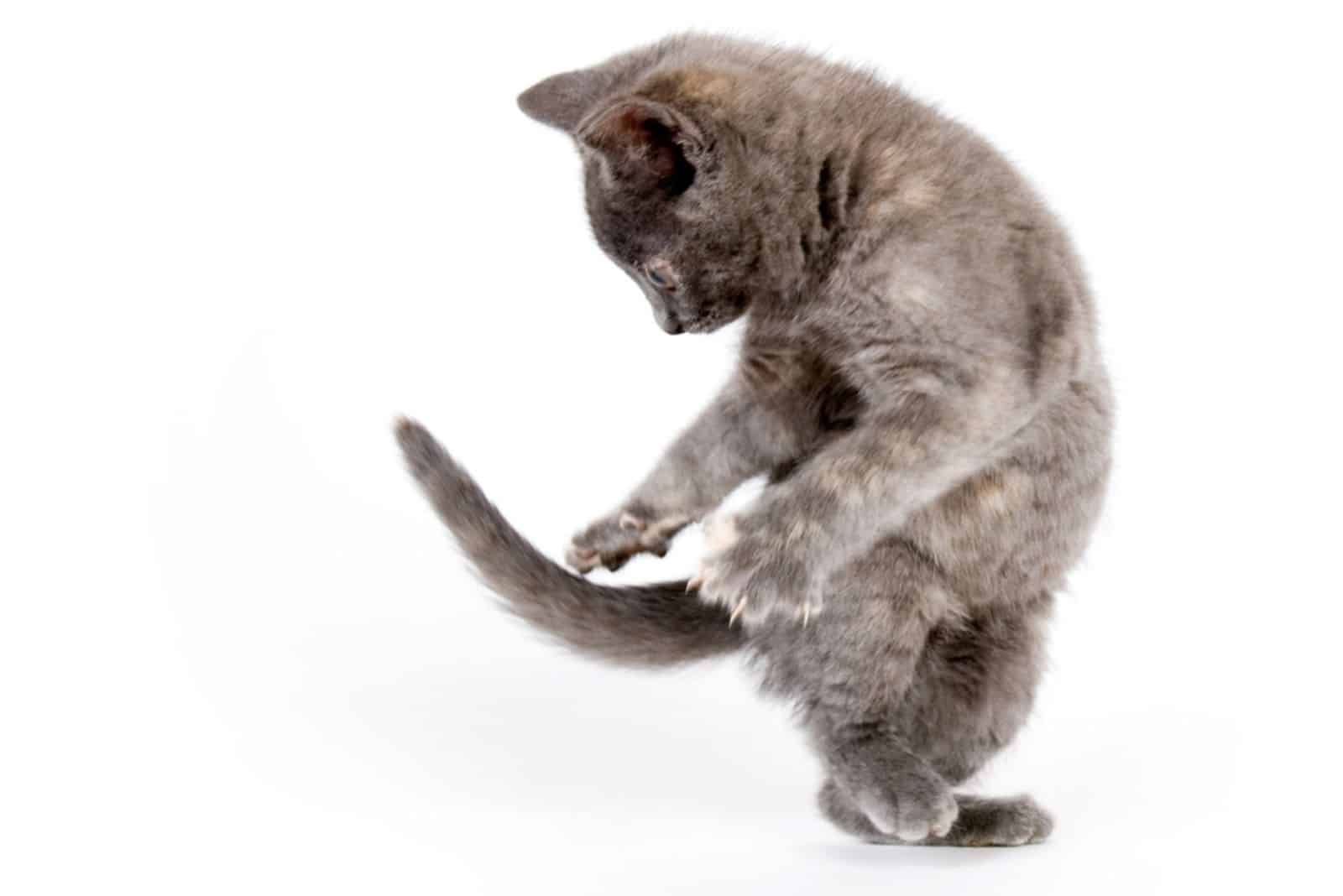
What is the significance of a cat chasing its own tail? The answer will depend on your cat’s age. Younger cats and kittens, in particular, do it as part of their playtime, while older cats are less likely to chase their tails, and if it does happen, it usually indicates a more serious issue.
If your cat continues chasing its tail and you also notice other behavioral changes, you should contact your vet to discuss any potential issues.
Chasing their tails can be part of a cat’s normal behavior, but sometimes it can be associated with health issues.
Usually, cats chasing their tails is harmless, but some of the other reasons might surprise you! You know your cat best, so you will know if the behavior is normal for your pet or if it is a change that requires some attention.
Why Do Cats Chase Their Tails – Common Reasons
Nothing beats seeing your feline friend do something they enjoy, and tail chasing is often a delightful pastime for us to observe, but be aware that it is not necessarily a natural habit for cats.
Cats chase their tails for a variety of reasons, some of which are entertaining and others that are not. The following are the most common reasons why a cat chases its tail. Remember that adult cats don’t often do it, but it can happen.
1. Cats Play With Their Tails
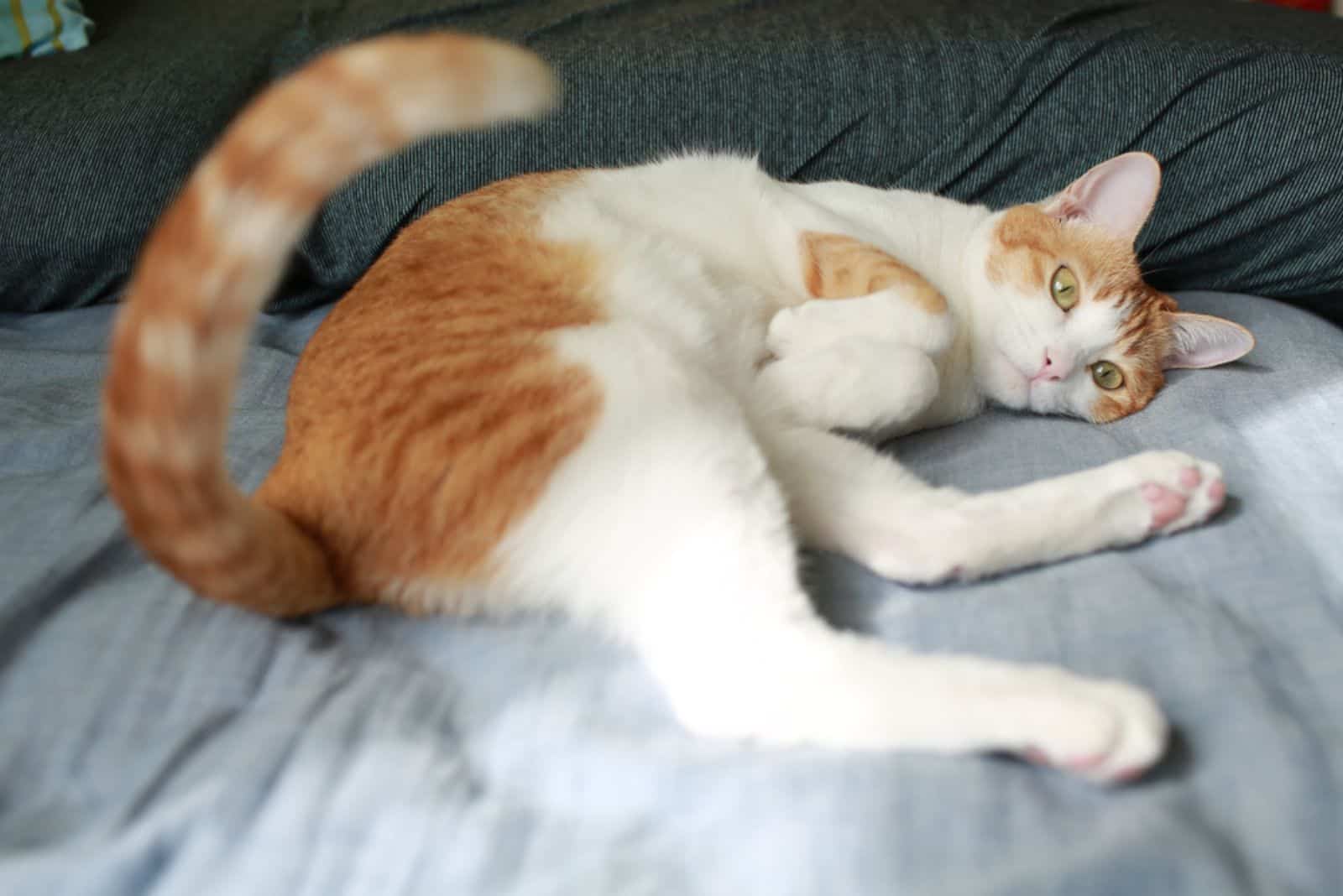
Some energetic cats regard their tails as built-in toys! It’s difficult to be bored when you constantly have your tail to pursue. Young kittens are particularly fond of any object that moves, and tails are the ideal snake-like animal upon which to pounce.
Adult cats may chase their tails for pleasure as well, but most are too dignified by the time they approach a certain age. Cats who are too gracious to hunt their own tail might be entertained with a scratching toy instead.
2. Cats Chase Their Tails To Reduce Stress
If your cat has been stressed as a result of a change to their routine, such as moving home, there are numerous things you can try to help your cat relax.
Cats chasing their tails is a common occurrence. However, if your adult cat is chasing its tail, especially if it’s an indoor cat, is more likely to be an indication that your cat is stressed.
Alternatively, your cat might simply be bored. Examine your cat’s living surroundings and try to add further opportunities for entertainment, challenges, and excitement.
Introduce more wand toys, interactive toys, scratchers, cat trees, and other forms of enrichment into your cat’s daily routine.
You can find lots of different cat toys in your local pet shop and order them from the comfort of your home on Amazon.
You can even consider laser pointers for playtime with your furry friend, just be careful never to point the laser directly to the cat’s eyes!
3. Cats Practice Their Hunting Skills

Your cat is an excellent hunter. They have a strong natural drive to pursue moving objects. Your cat’s own fluffy, quivering tail may be alluring. Your cat may pretend to catch it to hone his hunting abilities.
Kittens, in particular, prey on their mothers’ tails, as well as the tails of their siblings, as an early form of hunting. This behavior is more typical among indoor cats.
Outdoor cats have more opportunities to practice their hunting abilities, but indoor cats get significantly fewer chances to test out those skills.
4. Maybe There Are Fleas
Adult fleas like to gather at the base of a cat’s tail and bite. It may seem like your cat is chasing its tail, but actually, your cat is trying to scratch the part where fleas are biting and driving your cat crazy.
If fleas are to blame, you will notice other signs as well, like flea bites which will feel like bumps on the skin where your cat’s been bitten.
Also, cats may scratch or groom themselves excessively, and extra “dirt” may be visible while you brush your cat.
The most obvious sign is visible fleas when you part the cat’s coat and look at the skin. If a flea infestation is the culprit, treating your cat for fleas can help stop your cat’s tail-chasing behavior.
5. Maybe There’s An Allergy
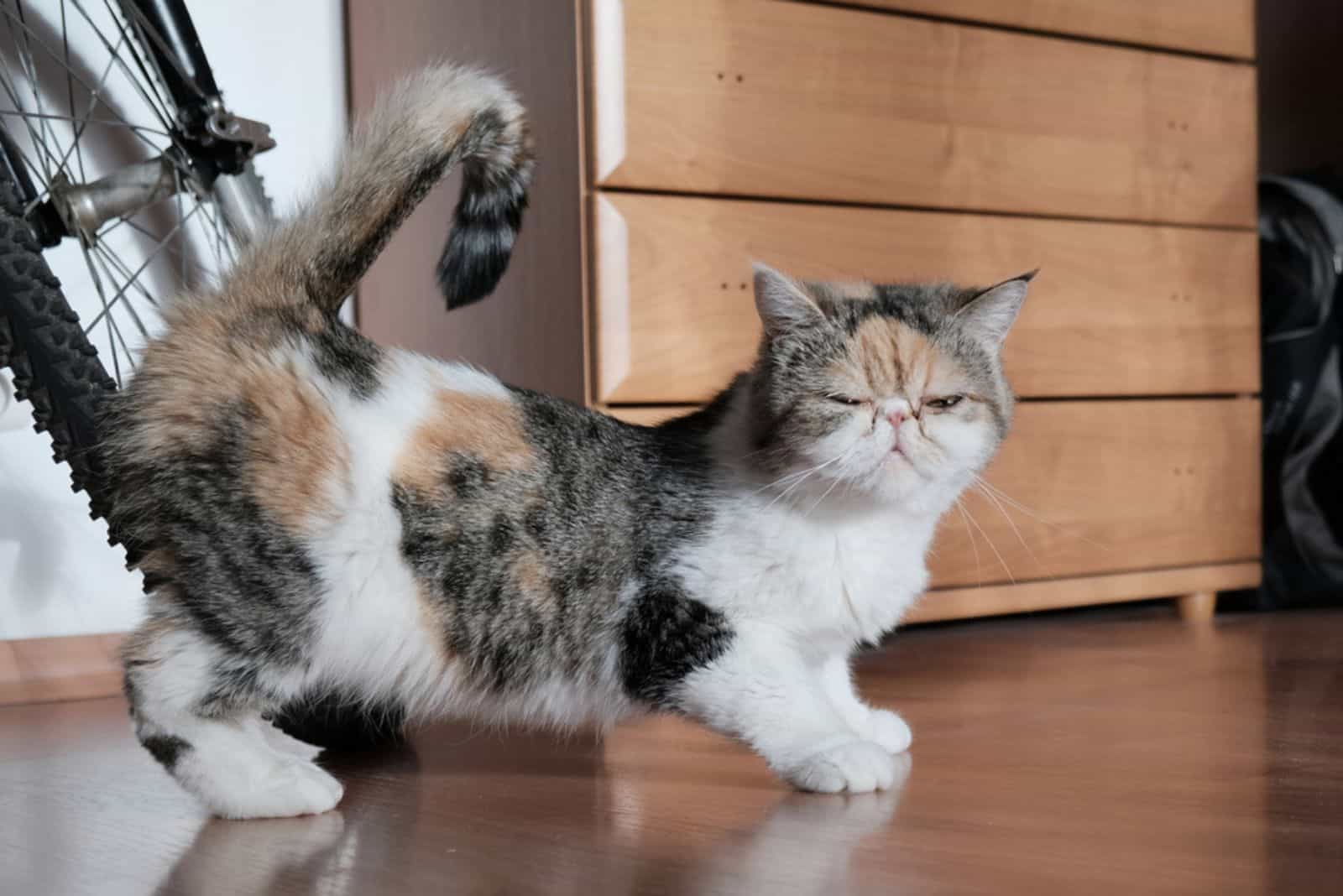
Environmental or food allergies can cause itchy and dry skin on your cat’s tail and in other areas. Kitties may whirl in circles attempting to discover the most effective technique to relieve the itchiness that’s bothering them.
Allergies may not always manifest themselves as an itchy tail. Other symptoms include persistent ear infections, rashes, and itching in other parts of the body.
Allergies can be addressed by avoiding the allergen or by giving the cat antihistamines prescribed by a veterinarian. In more extreme situations, steroids may be required to manage the itch and avoid additional harm from your cat’s excessive scratching.
6. Could It Be An Infection?
Infection can be another reason for your cat’s sudden interest in its tail. Infections can arise from a variety of sites, such as the anal glands found within the rectum. They are sometimes caused by a secondary infection after a scrape or damage to the tail.
Infections are best treated by first addressing the underlying cause, which you should discuss with the vet, such as expressing the anal glands and then using antibiotics.
7. Feline Hyperesthesia Syndrome

This rare and often unknown condition, caused by overactive nerve endings, can occur in cats of all ages. This may cause tingling in the tail or make your cat extremely sensitive when stroked.
Cats suffering from this condition may also experience panic-like episodes in which they rush around wide-eyed and frantic for about 30 seconds before falling right back to sleep as if nothing had occurred.
Any unusual behavior like this should be reported to your veterinarian. This medical issue, called Feline Hyperesthesia, is basically the cat version of obsessive-compulsive disorder. Some indicators that your cat may have feline OCD include:
• extreme sensitivity to touch
• your cat’s pupils are dilated
• your cat’s focus is on its tail
• aggressive cat behavior
• cat excessively licking its tail
8. ‘Stud Tail’ Syndrome
This medical condition is also called a supracaudal gland infection, and it is most common in intact male cats. The infection is caused by hyperactive sebaceous glands at the base of the tail.
Sebaceous glands produce oils that make your cat’s fur stay silky. Excessive amounts of these oils can generate a waxy buildup at the base of the cat’s tail, causing the fur to matt and causing an uncomfortable crusty buildup.
An infection may occur if the condition is serious enough. Treatment often includes neutering the male cat and practicing good hygiene.
Should You Be Concerned When Your Cat Chases Its Own Tail?
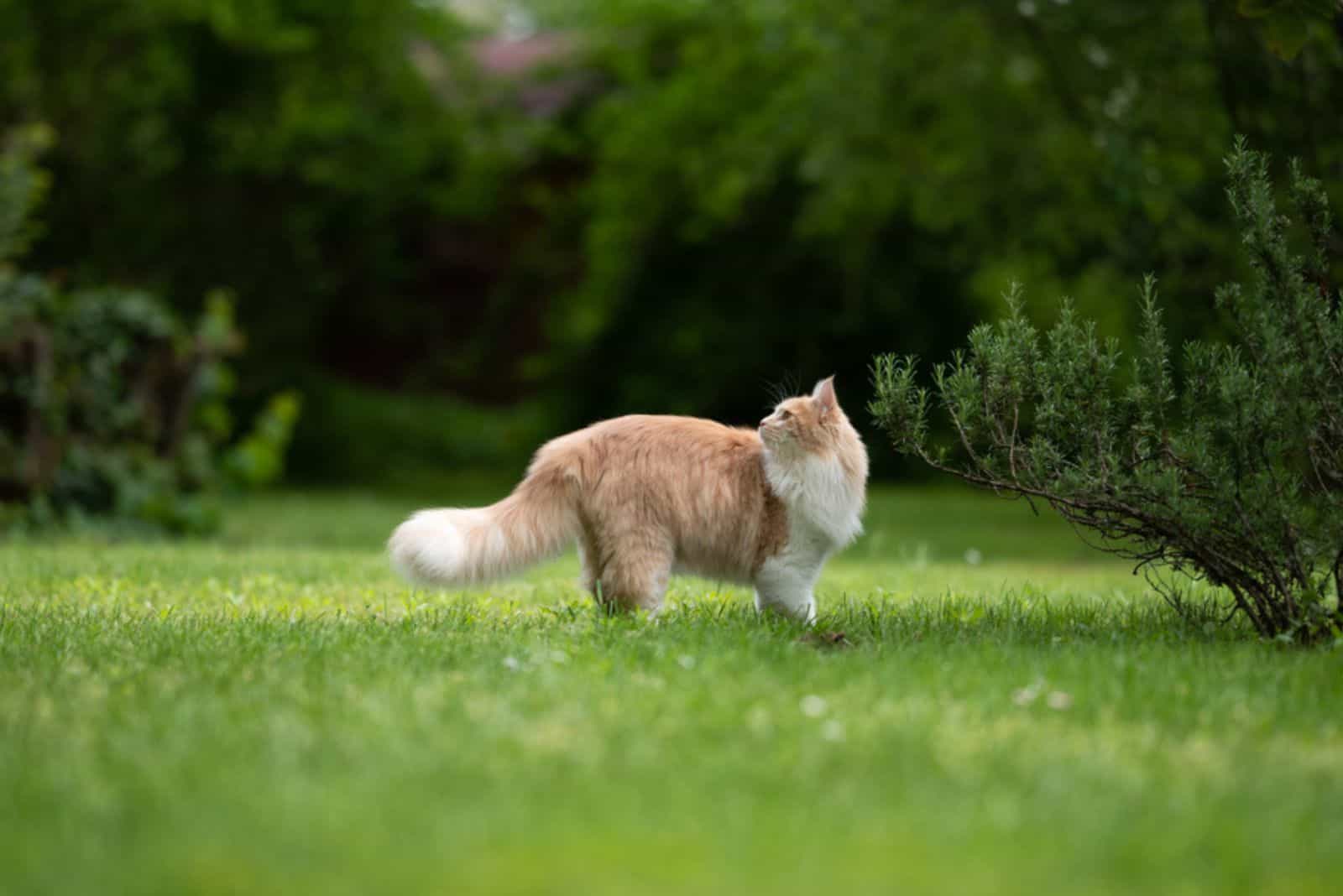
In general, any extreme change in your cat’s behavior can be a useful warning that something may be wrong. If your adult cat has never pursued its tail before and now it does, this is cause for concern and should be explored.
Most health disorders that induce tail chasing have additional visible symptoms that you should be aware of. If your cat starts chasing their tail all of a sudden, check them for fleas, bruises, diseases, or anything else that seems unusual.
Any other unusual behaviors, such as cats behaving differently during cuddle time with you or changes in appetite or activity level, should also be monitored and reported to the vet.
Tail chasing is fun, but if your cat has begun chasing and chewing their tail, be vigilant for self-inflicted wounds and infections.
Even if your cat’s tail chasing is a natural activity, the consequences of tail biting might be more serious. Always get any wounds or bite injuries on the tail examined by a veterinarian.
Tips On How To Reduce This Type Of Cat Behavior
Observing your cat’s body language and noticing these sudden changes may be worrying. If your cat’s tail chasing is becoming an issue, attempt to stop the practice by providing them with another object to chase.
Wand toys or toys hanging from a string are ideal for interactive play with your cat. If your cat’s been alone for a few hours and it starts chasing its tail out of boredom, an interactive toy will fulfill that need without the risk of causing harm to your cat’s body.
This also applies to cats who pursue the tails of other cats!
Other things to do, besides entertaining your cat and providing sources of enrichment, is to spend more time with your beloved pet, reduce any stress, and speak to your vet about any potential health issues so they can treat them effectively.
1. Treat Any Infection There Is
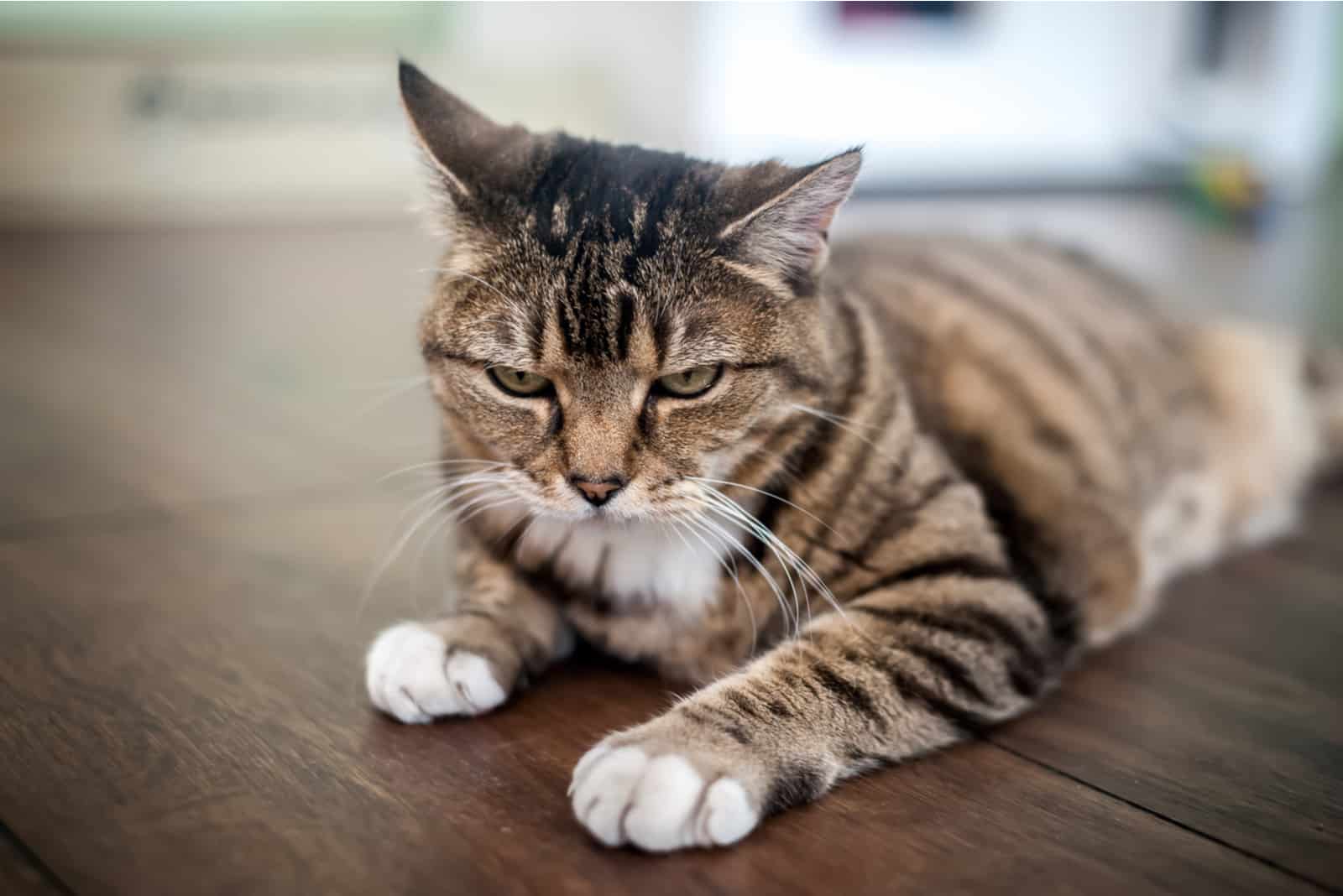
If you suspect a tail infection is present, contact your veterinarian at once. They will inspect the tail, perform a range of diagnostic tests, and determine the source of the infection. Antibiotics are frequently used to treat infections.
If an inflamed anal gland is the cause, it will almost certainly need to be expressed and then treated with antibiotics.
2. Keep The Stress Away
As cats can chase their tails when anxious or stressed, you may be able to prevent this habit by providing a stress-free environment for your cat to live.
This means that any changes should be introduced gradually, and new pets should be introduced with caution.
If you’re relocating, make sure your cat has everything it requires, including its own space with food and water, a litter box, bed, and other reassuring belongings.
Kittens are easier and faster to train than older cats. As a result, while your kitten is still small, expose it to as many new faces, noises, and situations as possible.
This way, cats will become accustomed to their surroundings and will feel more capable of dealing with change.
3. Treat Your Cat’s Hyperesthesia Syndrome
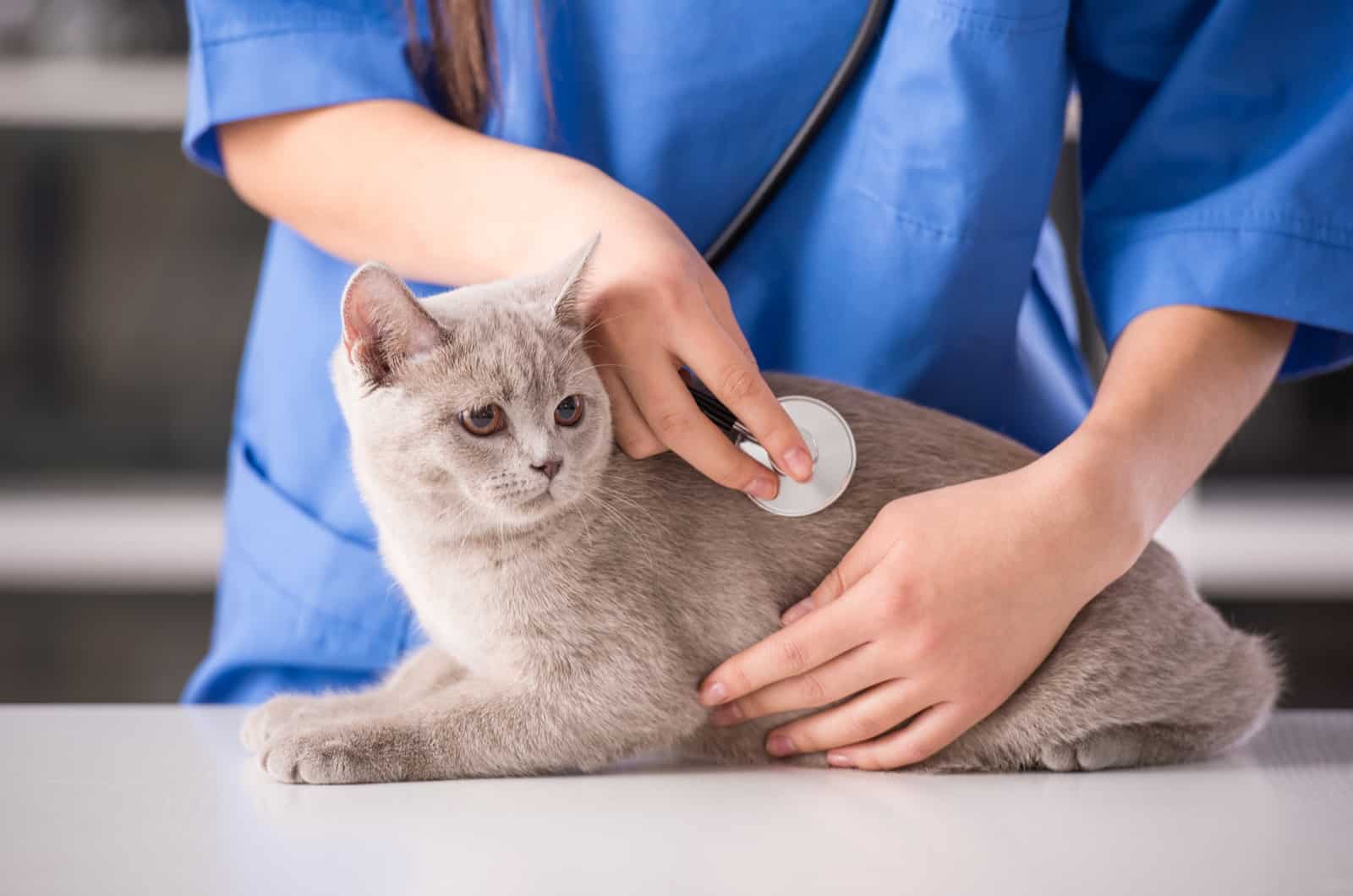
It is critical to correctly diagnose and treat Feline Hyperesthesia Syndrome if your cat has it. This is not a condition that can be treated by simply Googling it. It requires investigation and a treatment plan that will likely include prescription medications.
Antidepressants and anti-anxiety medications are commonly prescribed by veterinarians. Fortunately, it is an uncommon illness, but you should be aware of its signs and how to manage it.
Also, make a note of everything your cat does during an incident so that you can discuss it with your vet.
4. Treat Your Cat’s Allergy
If you think your kitty might be allergic to something, contact your veterinarian for advice. The vet will first determine what is triggering the allergic response so that it can be properly addressed.
Perhaps the cause is a particular food; your veterinarian will advise you to discontinue using that type of food.
If the cause is environmental, the veterinarian will most likely recommend antihistamines, corticosteroids, possibly dust-free cat litter, a new cat bed, ear drops, or ointments.
When fleas are the source of the allergy, you must treat the infection, apply the specified flea treatment, and then take preventative measures.
5. Flea Treatment Is Necessary
As I said, fleas can also induce tail chasing, and treating the parasitic illness will stop this activity. Despite the fact that various publications provide advice on how to get rid of fleas and also which medications to take, you should always contact your veterinarian.
A few of these anti-flea drugs are rather severe and should only be used if recommended by a veterinarian.
As well as the treatment, you should focus on sanitizing your household to avoid infection. You may also use flea preventative medicine to help reduce the likelihood of your cat catching fleas again in the future.
6. Neuter Your Male Cat
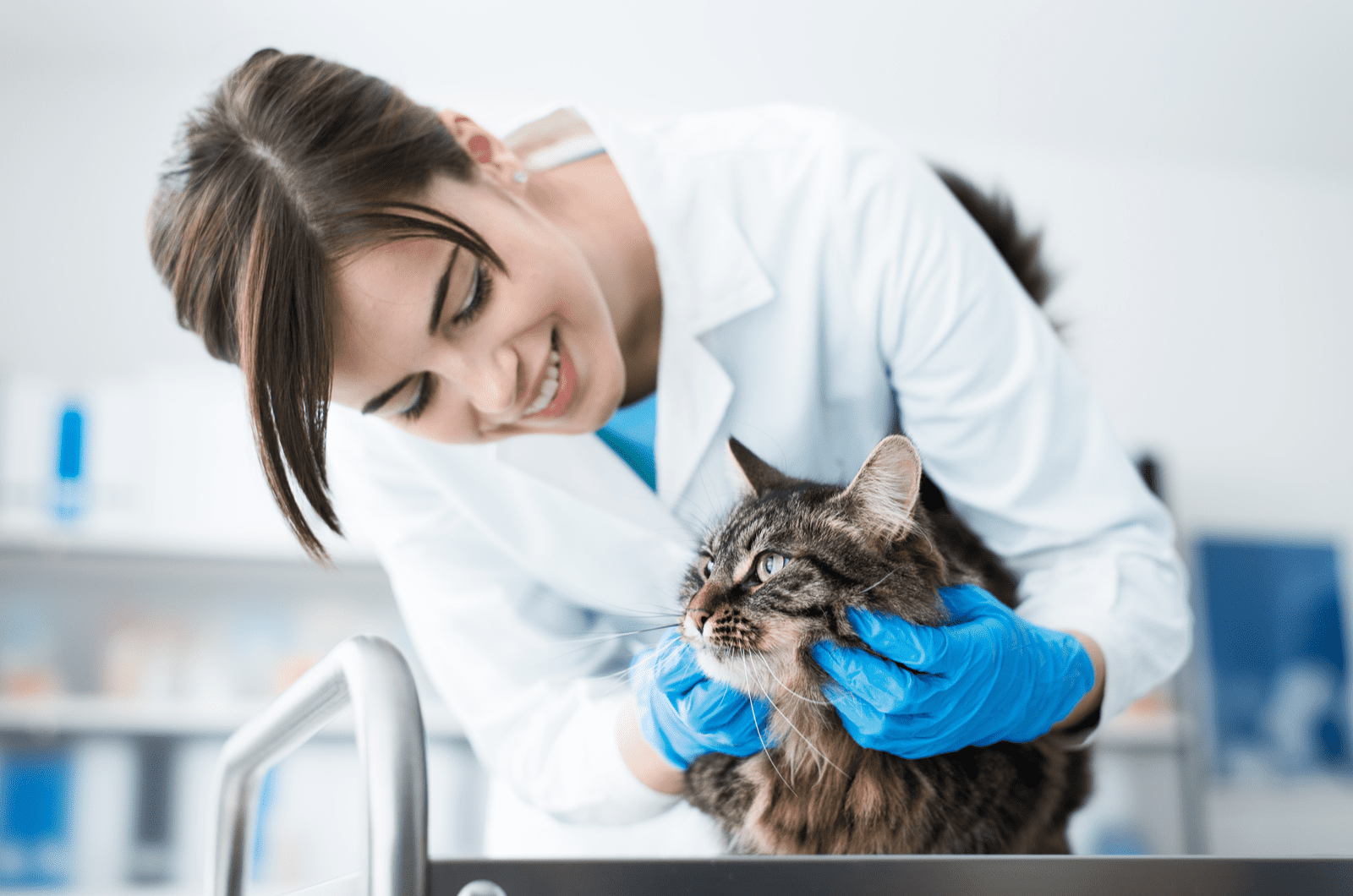
Supracaudal Gland Hyperplasia can induce tail chasing, and you can reduce this tendency by neutering your cat.
This will also help your cat avoid a variety of additional issues, including undesired female cat pregnancies, wandering away from home, aggressive behavior, prostate issues, and testicular cancers.
You should also strive to maintain proper hygiene. This includes grooming your cat (depending on which cat breed it is) at least once a week to avoid matting. Long-haired cats usually require coat care on a daily basis.
7. Enjoy Your Time With The Cat
If you leave your cat home alone for several hours throughout the day, they will most likely swish and chase their tail because they are lonely and/or bored. When you go home, you must spend some time cuddling or playing with your cat.
Enjoying your time together includes playing together, snuggling, and going on walks. You should not leave your pet alone too much and should make time so that they feel cherished.
Finally…
If your older cat grew up chasing and hunting its own tail, tail chasing in maturity is quite likely. However, if your adult cat is suddenly fixated on their back end with unwavering devotion, you may want to look into the reasons behind this unusual habit.
Why do cats chase their tails? This is a question that has occurred to every cat owner at some point, and this article should have answered your questions.
Tail chasing is not as simple as it appears, so consult your veterinarian (and a cat behaviorist if required) because determining the reason and treating it early will save you and your cat a lot of stress and meows.
Related Articles:
• Why Do Cats’ Tails Puff Up? 7 Reasons That Might Surprise You
• Why Do Cats Have Tails? 13 Questions & Answers
• Stepping On Cat’s Tail – What To Do?
Like this post? Share or pin it for later!


